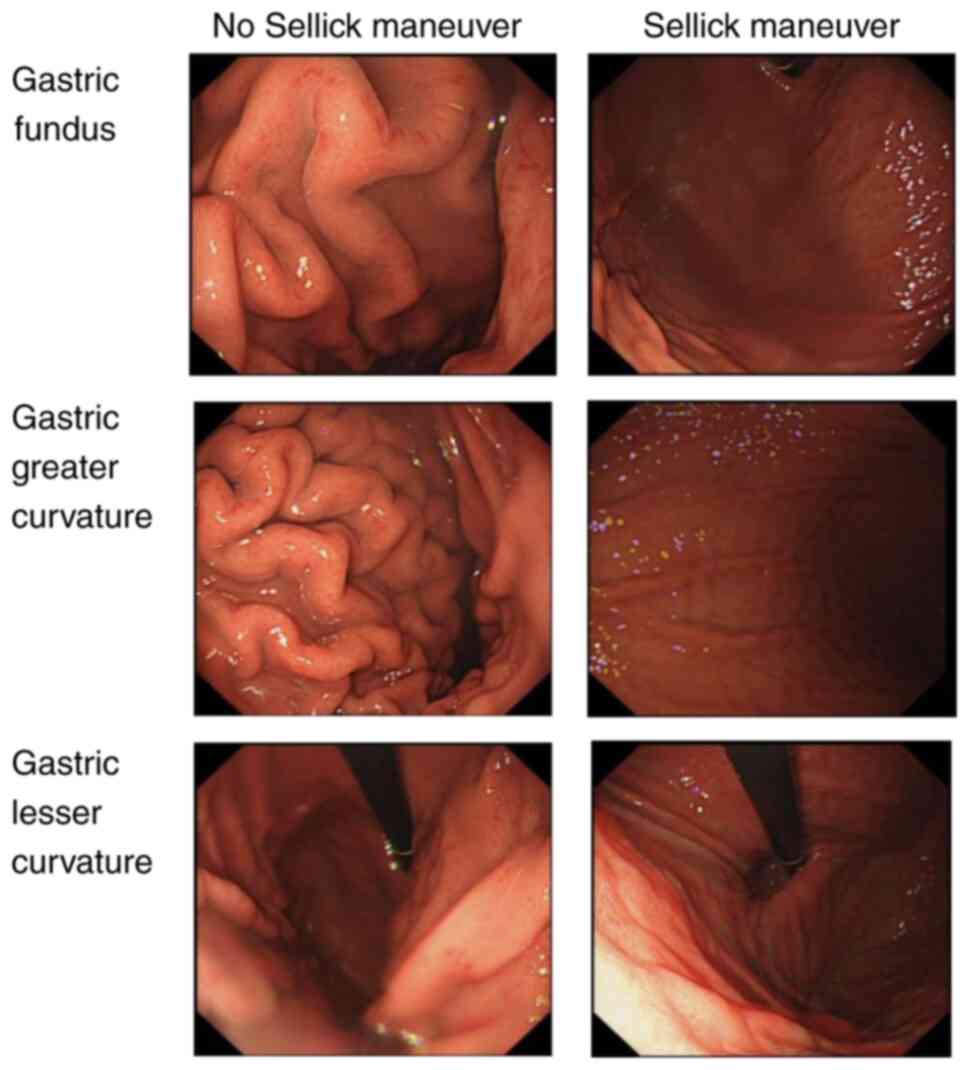Effectiveness of the Sellick maneuver for painless gastroscopy in patients with esophageal hiatal hernia: A randomized, self‑control trial
- Authors:
- Published online on: September 21, 2023 https://doi.org/10.3892/etm.2023.12218
- Article Number: 519
-
Copyright: © Zhang et al. This is an open access article distributed under the terms of Creative Commons Attribution License.
Metrics: Total
Views: 0 (Spandidos Publications: | PMC Statistics: )
Total PDF Downloads: 0 (Spandidos Publications: | PMC Statistics: )
Abstract
The Sellick maneuver is used for endotracheal intubation to prevent the occurrence of gastroesophageal reflux. The aim of the present study was to observe the effect of the Sellick maneuver on safety, esophageal closure status, gastric mucosal fold extension status, and positive detection rate of lesions in patients with esophageal hiatal hernia under painless gastroscopy. A total of 40 patients with esophageal hiatal hernia who underwent painless gastroscopy were screened for the use of the Sellick maneuver, in which the operator applied pressure to the cervical cricoid cartilage during the examination. The status of esophageal closure at the are pressed, examination time, gastric mucosal fold extension score, positive rate of lesion detection, and reflux of gastric juice or gastric contents, amongst other parameters were assessed. After using the Sellick maneuver, the state of esophageal closure during gastroscopy was significantly better than the no‑Sellick maneuver group (P<0.05), and the extension scores of the greater curvature folds of the gastric body, the lateral folds of the lesser curvature of the gastric body, and the mucosal folds of the fundus were significantly higher than that of the no‑Sellick maneuver (all P<0.05). The number of gastric polyps and gastric lesions (gastric ulcers and mucosal hyperplasia, amongst others) examined with the Sellick maneuver was significantly higher than the no‑Sellick maneuver group (P<0.01). The Sellick maneuver effectively improved the extension of gastric mucosal folds during gastroscopy in patients with esophageal hiatal hernia, increased the positive detection rate of gastric lesions, and shortened the endoscopy time.












